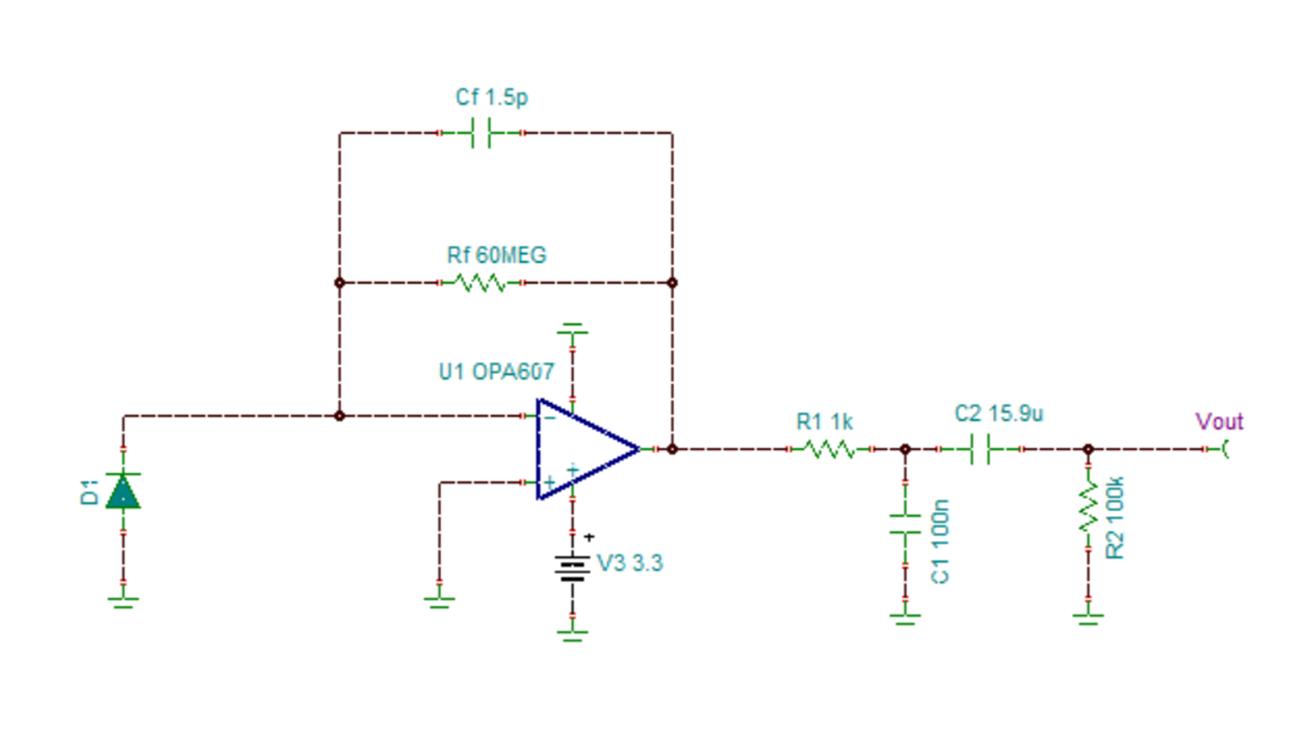SNLA399 July 2022 OPA607
2 Single Op Amp Based Analog Front End
 Figure 2-1 Block Diagram of Analog Front
End (AFE)
Figure 2-1 Block Diagram of Analog Front
End (AFE)The signal chain shown in Figure 2-1, is a single operational amplifier based analog front end solution for the particle monitoring sensors. The gain of the trans-impedance amplifier configuration is
where Iin is the photo diode current and VOUT is the filtered output.
This signal chain supports a huge measurement range from a minimum current of 50 pA to as high as 50 nA. The rail to rail output capability of OPA607 allows to maximize the dynamic range at the AFE output thereby achieving such huge measurement range. As the photo current generated due to falling light intensity will flow from cathode to anode of photo diode, the design focuses on measuring the positive peaks of photo current due to scattered light. The OPA607 input common mode range extends up to the negative supply rail allowing the ground referencing of TIA. Low input offset voltage and input bias current of OPA607, ground referenced circuit ensures that when there is no photo current, the op amp output is small enough to avoid any loss in dynamic range.
The high bandwidth of OPA607 allows high trans-impedance gain of 155.5 dBΩ and passband frequency range of 0.1 Hz to 1 kHz to be achieved with a single stage. The photo diode is zero biased to minimize noise as well as the leakage current of photo diode. The dark current of photo diode increases exponentially with increasing temperature, thereby a zero bias helps in minimizing the dark current and preventing operational amplifier saturation. In zero biased mode the variations of responsivity with temperature are lower. Low dark current and high photo sensitivity at zero bias are major considerations while choosing a photo diode for particle sensors.